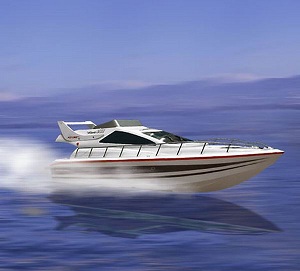Motorboats are an exciting class of vessel that offer you the chance to quickly get yourself out on the water and skimming the open waves.
Whether you’ve sailed for many years or are new to all things nautical, our beginner’s guide to motorboating will help you get your beari ngs. You’ll be well prepared to take the course that fits you best, rent a motorboat or look into buying one if that’s your goal.
ngs. You’ll be well prepared to take the course that fits you best, rent a motorboat or look into buying one if that’s your goal.
The term ‘motorboat’ is something of a catch-all. Since it just refers to any boat with a motor, we need to break the category down a little further.
A speedboat is a kind of motorboat specifically designed for – you guessed it – speed. They are as streamlined as possible, with deep v-shaped hulls to powerfully cut through the waves at pace.
Larger motor cruisers are built for leisure, and can drastically vary in size. Some are kitted out for day trips, and others are full holiday cruisers with sleeping accommodation and kitchen and bathroom facilities.
Finally, any boat with a motor attached classifies as a motorboat – that includes sailboats and dinghies fitted with an outboard motor.
The engine is an ‘internal combustion’ engine, just like a car’s. However, instead of rotating an axel, the engine on a motorboat drives a propeller in the water, or sometimes a jet pump. Each of these creates a strong force against the water which accelerates the boat forward.
An inboard motor is an engine that’s built-in and enclosed by the hull of the boat. In contrast, an outboard motor is a self-contained engine that is usually mounted to the back of the boat. Outboard motors can be attached to dinghies and rowing boats, transforming them into motorboats.
A motorboat is obviously a completely different animal to a sailboat when it comes to maintenance and repairs, for one main reason – it has an engine.
For any given motorboat, there are a few simple engine procedures and checks that need to be done every time before hitting the open waters. The procedures vary according to the type of engine, and there are specialised maintenance courses available for different engine types. Refuelling and repairs are often also covered.
Piloting a motorboat is, as you’d expect, something of a specific skillset.
In many ways, it’s easier than sailing – your source of power is onboard, and there’s no need to catch the perfect wind or run around pulling ropes and ducking under the boom with the athleticism of a gymnast. You just turn power on and point the boat where you want to go, right?
That’s the essence of it, but as you’d expect, there are a few nuances. The controls are generally quite simple, consisting of not much more than throttle and steering wheel, but the movement dynamics take some getting used to. Boats aren’t like cars, because the “surface” on which they travel – water – is itself in constant flux.
One important thing to remember is that if you’re travelling parallel to waves, either natural or those caused by another boat, you’re going to be rocking from side to side quite powerfully. Aim to cut across waves at at least 45 degrees for a smoother ride.
It’s also important to know the local laws pertaining to boating, such as the minimum distance between boats, maximum speeds and other general rules – and be aware that these may also change from area to area.
A good introductory motorboating course will give you the skills you need to competently pilot a powered vessel, alongside teaching you essential maintenance, repair skills and local boating laws. Our job at The Boating Hub is to connect you to wide range of motorboat courses in the UK and further afield – and we’re confident you’ll find a course that meets your needs.